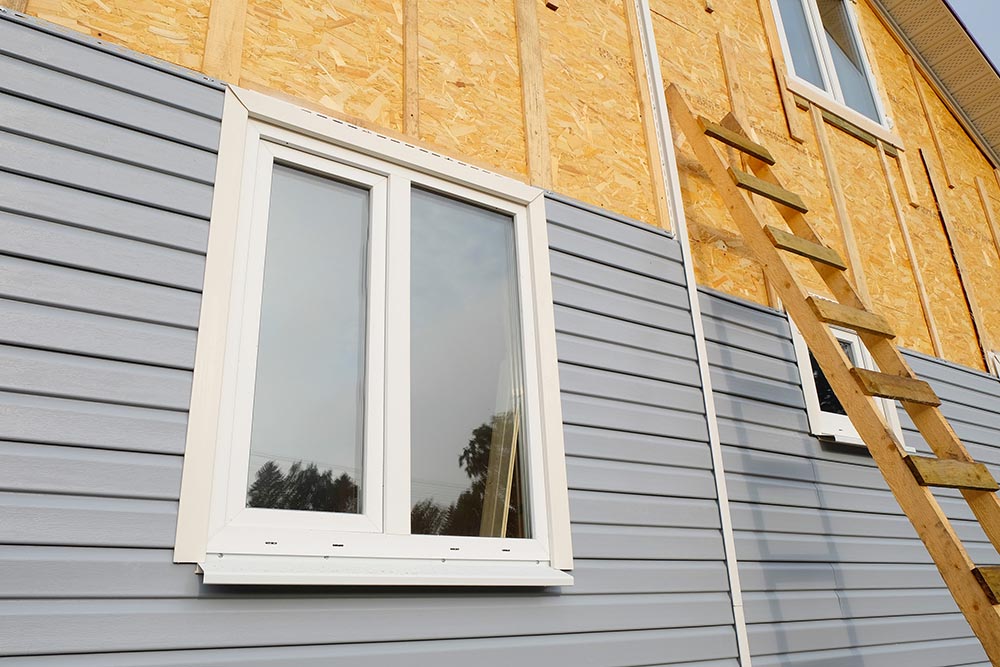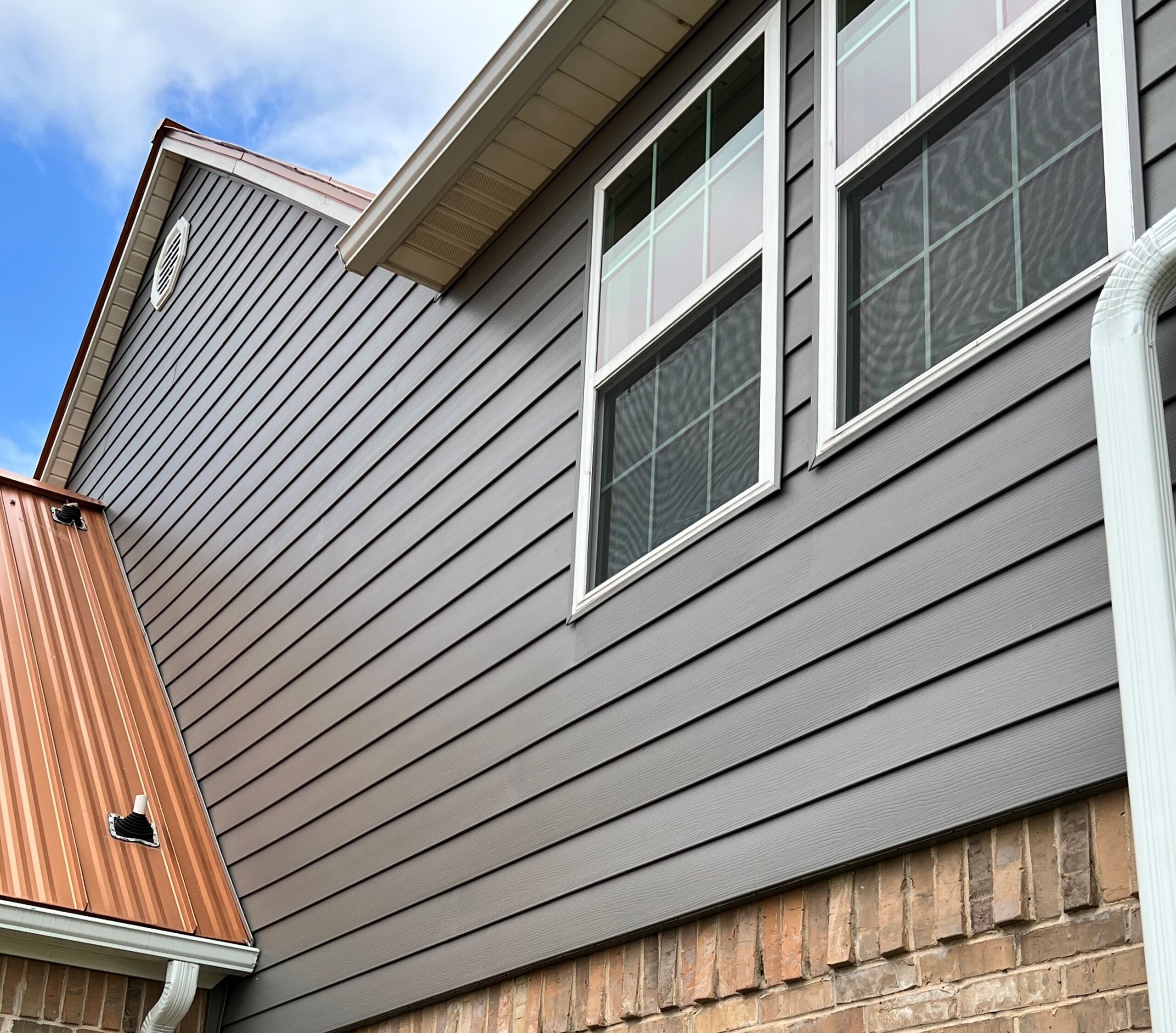Baltimore MD siding estimates: Tips for Choosing a Experienced Siding Contractor
Best siding materials: Exterior Cladding Can Considerably Improve The Look And Protection Of Your Home
Checking out the Spectrum of Siding Products
When it concerns siding, the choices can seem like a labyrinth. Each material carries its own character, performance quirks, and beauty. Ever wondered why some homes boast that rustic wood attraction while others shine with streamlined vinyl panels? Let's peel back the layers and dive into the most popular siding options that form our communities.
Wood Siding: The Classic Storyteller
Wood has an almost poetic connection with homes; it ages like great white wine, getting character through the seasons. Beware, the romance of wood needs attention. It's susceptible to wetness and insects, so routine maintenance is the rate of admission. However, the heat and texture it imparts? Irreplaceable.
Vinyl Siding: The Chameleon of Exteriors
If versatility had a poster child, vinyl siding would be it. This product is available in a rainbow of colors and textures, imitating wood, stone, and even brick with surprising fidelity. It's low-maintenance, long lasting, and resistant to fading-- ideal for property owners who prefer to invest weekends exploring instead of scraping paint.
Fiber Cement: The Silent Strength
Fiber cement typically flies under the radar but packs a punch. Composed of sand, cement, and cellulose fibers, it resists fire, bugs, and rot. Imagine a siding that looks like wood but chuckles in the face of termites and weather condition. It's a favorite amongst those who look for longevity without sacrificing visual appeals.
Metal Siding: The Modern Minimalist
Aluminum and steel siding have actually risen in appeal, especially for contemporary homes. Their sleek lines and reflective surfaces provide a modern twist. Plus, metal siding can brush off damages and scratches much better than you website 'd expect. Curious about a siding that's both commercial and inviting? Metal may be your answer.
Other Noteworthy Products
- Stucco: Perfect for Mediterranean vibes, it uses a textured surface that's both long lasting and energy-efficient.
- Brick Veneer: An ageless choice, providing strong defense with timeless beauty.
- Engineered Wood: Combines the beauty of wood with boosted resistance to decay.

Contrast Table of Common Siding Types
| Product | Resilience | Upkeep | Look | Expense Effectiveness |
|---|---|---|---|---|
| Wood | Moderate | High | Natural, warm | Medium |
| Vinyl | High | Low | Differs widely | High |
| Fiber Cement | Extremely High | Low | Wood-like | Medium |
| Metal | High | Low | Modern, smooth | Medium |
| Stucco | High | Medium | Textured | Medium |
Choosing the best siding frequently boils down to a blend of personal taste and useful needs. Your home's outside isn't simply about security-- it's a canvas reflecting your unique story. So, what does your siding state about you?
Mastering the Art of Siding Installation
Ever seen how a home's exterior can either whisper or scream its personality? The setup techniques behind siding hold the trick to that subtle or bold statement. When it comes to siding, accuracy is non-negotiable; a single misaligned slab can welcome wetness or let cold drafts slip in, weakening years of effort.
Preparation: The Unsung Hero
Before the very first nail hits the wood or vinyl, comprehending the substrate is vital. Is the sheathing level!.?. !? Exist gaps behind the old siding that could trap water? Ignoring these details typically leads to warping or premature degeneration. A skilled installer will constantly:
- Inspect and fix the sheathing surface area.
- Set up a high-quality weather-resistant barrier to combat moisture seepage.
- Think about adding furring strips for improved airflow in cases of unequal walls.
Nailing Techniques: More Than Simply Hammer and Nail
One may think that nailing is simple-- struck the slab, secure it, done. But each siding material requires an unique technique. Wood siding needs nails long enough to penetrate the sheathing but not so deep that they divided the slab. Vinyl, on the other hand, demands a fragile balance; nails ought to allow for expansion and contraction to prevent buckling.
Here's a fast rundown of expert nailing ideas:
- Usage galvanized or stainless steel nails to resist rust.
- Leave a slight gap between nail head and siding surface area to accommodate motion.
- Area nails uniformly-- too close and the siding can crack; too far and it might loosen up.
Seam Methods and Overlaps
Joints can be the Achilles' heel of siding setup. Have you ever seen siding panels that look like they're gradually peeling off? Typically, it's due to improper overlapping or inadequately sealed joints. Welcoming a shingle-style overlap, where each panel covers the one below by about an inch, produces a natural water-shedding effect.
Pro pointers include:
- Stagger joints between courses to minimize water intrusion.
- Usage versatile, paintable caulking moderately to seal corners and joints.
- Make sure that corner posts are securely fitted but still permit material movement.
Dealing with Corners and Trim
Corners aren't simply aesthetic information-- they're stress points. Installing J-channels and corner trims effectively demands perseverance and skill. A common trap is cutting corners too tight, which limits siding growth and leads to warping or bubbling. Enabling a small space and after that sealing with an appropriate trim assists preserve stability with time.
Advanced Techniques: Beyond the Basics
| Strategy | Purpose | Advantage |
|---|---|---|
| Rain Screen Installation | Creates an aerated cavity behind siding | Improves moisture management and extends siding life expectancy |
| Butt Joints with Flashing | Prevents water ingress at panel ends | Improves sturdiness and decreases upkeep |
| Custom-made Furring Strip Layouts | Makes sure even siding surface on irregular walls | Enhances looks and siding performance |
Have you ever wondered why some siding tasks look perfect for decades, while others show wear after a few seasons? The secret lies not simply in the products but in the skill of installation. Every cut, every nail, every overlap tells a story-- a story of workmanship, weather-readiness, and attention to information.
Maintenance and Repair Tips for Siding
When you glimpse at your home's outside, the siding often bears the force of time and weather condition. However have you ever stopped briefly to think of what lurks behind that captivating exterior? Wetness can slip in through tiny cracks, turning a small blemish into a costly headache. That's why regular assessment isn't just good practice-- it's important.
Envision this: a little chip in your vinyl siding, apparently unimportant, ends up being the entry point for water throughout a storm. Weeks later, concealed rot festers underneath, quietly eroding your home's structure. This is where a specialist's eye and timely action save you from prolonged damage.
Spotting Problem Early
- Try to find discoloration or warping, which often indicates water seepage.
- Listen for hollow noises when tapping the siding; they may expose loose panels or underlying decay.
- Check caulking around doors and windows-- gradually, it can split and jeopardize the seal.
Many property owners underestimate the value of cleaning their siding. Dirt and mildew do not just mar the look; they accelerate wear. Utilizing a soft brush with a mild cleaning agent keeps surface areas fresh without harming the product. Prevent high-pressure cleaning unless you know the siding type can handle it-- otherwise, you risk requiring water behind the panels.
Basic Repair Work That Make a Distinction
- Fill small fractures or holes with top quality exterior-grade sealants to avoid water intrusion.
- Change harmed panels quickly to preserve the siding's stability and curb appeal.
- Repaint wood siding every few years, but do not simply slap on paint-- sand and prime first to ensure long lasting adhesion.
Here's a nugget frequently ignored: when fixing, always match the siding's expansion residential or commercial properties. Disregarding this can cause panels to buckle or spaces to form later on, undoing your efforts.
Seasonal Siding Care
| Season | Upkeep Focus | Pro Tips |
|---|---|---|
| Spring | Inspect for winter season damage; tidy mildew | Use a vinegar option for mildew removal-- eco-friendly and reliable |
| Summer season | Examine and fix caulking; repaint if required | Paint during moderate temperatures to prevent fast drying and breaking |
| Fall | Clear seamless gutters to avoid water damage | Trim trees to avoid branches scraping siding during winter season storms |
| Winter season | Display for ice dams and snow buildup | Use mild snow removal tools; avoid sharp items |

Ever questioned why some siding lasts decades while others fail rapidly? The answer often depends on the subtle nuances of maintenance. It's not practically reacting to noticeable defects but preparing for how your home's environment will interact with its exterior. By mastering these repair and upkeep tactics, you transform siding from a simple protective shell into a lasting architectural possession.
Ecological Effect and Sustainability
When thinking about siding, the question isn't simply how it looks or lasts-- it's how it lives with the planet. Have you ever stopped briefly to consider the ripple result your option of outside material has on the environment? The production procedure alone might surprise you. For instance, standard vinyl siding, while popular for its toughness and low upkeep, frequently involves petrochemical derivatives that remain in ecosystems long after disposal.
Wood siding, on the other hand, provides an eco-friendly resource, however it's not without its own environmental footprint. The carbon cost of collecting old-growth trees and the energy used in treatment and transportation can be significant. Yet, when sourced properly, wood imitates a carbon sink, locking away CO2 instead of releasing it.
Sustainability Metrics to Consider
- Embodied energy: The total energy consumed throughout extraction, manufacturing, and installation.
- Longevity and upkeep frequency: How frequently will the siding need repair work or replacement?
- End-of-life recyclability: Can the product be repurposed or does it end up in land fill?
- Thermal efficiency: Does the siding add to energy performance, minimizing heating and cooling needs?
Let's not overlook the often ignored impact of siding color and surface. Lighter shades show sunlight, lowering heat absorption and decreasing cooling costs in warmer environments. Darker siding might increase energy loads however can be advantageous in colder areas looking for passive solar gain.
Professional Tips for Eco-Friendly Siding Choices
- Go with siding made from recycled material whenever possible; it decreases demand for virgin products.
- Try to find products with third-party sustainability certifications to confirm ecological claims.
- Think about fiber cement siding, which mixes cement, sand, and cellulose fibers-- providing toughness with less ecological toll than vinyl.
- Make sure appropriate insulation beneath siding to maximize energy efficiency, as siding alone isn't a thermal barrier.
- Keep your siding regularly; a clean outside extends life-span and delays replacement.
Keep in mind the old farmhouse down the lane? Its weathered cedar siding has represented over a century due to the fact that it was crafted from locally sourced lumber and preserved with care, proving that sustainability isn't almost brand-new innovation-- it has to do with respect for materials and environment. Could siding choices today echo that durability and environmental mindfulness?